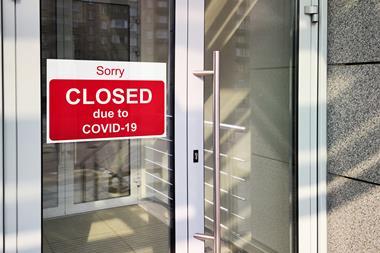Corporations are holding more risk on their balance sheets as the value of intangible assets grows
Intangible assets are now the predominant source of economic value for global businesses. Analysis by insurance broker Howden shows that nearly 70% of total business value for the world’s largest 50 corporations emanates from intangibles. This equates to roughly $11 trillion.
David Flandro, managing director, HX Analytics said: “The shift towards an asset-light economy is transformative; intangible – and largely uninsured – exposures are becoming more substantive.
”The rise of technology companies and peer-to-peer disruptors is indicative of an ability to create value from intangibles. In fact, the bulk of corporate value is today associated with intellectual property, brand and reputation ahead of property, plant and equipment. The trend towards intangible value is accelerating.”
Although these shifts started long before the manifestation of any global pandemic, COVID-19, with all of its attendant perils, has led to a greater reliance on digital technologies and revealed pre-existing vulnerabilities to an interdependent and interconnected global economy.
Risks emanating from what appear to be distinct perils like cyber, business interruption, loss of reputation (or data), supply chain vulnerabilities and operational failures can occur simultaneously, threatening significant and potentially systemic disruption across multiple geographies.
The nature and scale of these exposures have moved non-physical loss scenarios from the theoretical to the real world and, in doing so, caused a marked shift in risk perceptions. In many cases, historical experience is no longer indicative of future exposure.
Key findings on what this means for the risk transfer sector include:
- The range of impacts associated with intangible risk proliferation highlights the need to reimagine the scope of insurability.
- Insurance gaps are often disproportionately large for perils whose loss characteristics are of a non-physical nature – a trend that must be reversed in order to meet the rapidly changing needs of clients.
- This provides an important test for an underwriting model which has traditionally segmented mostly tangible assets into buckets of pre-existing coverages, guided by historical loss data and assumptions around accumulations and correlations which may now no longer apply.
- Inaction is not an option: risk retention is an expensive business, especially in such an unpredictable risk environment. There are signs that corporations are today holding more risk on their balance sheets than they were even five years ago. The need for insurance solutions has never been greater.
- This represents a clear opportunity for underwriters to step-up and secure their positions as trusted partners.
Charlie Langdale, managing director, Financial Lines, Howden Broking, comments: “A new and more outward approach needs to be adopted by the insurance market in finding solutions for intangibles. The market has long been held back by its siloed approach to risk.
”Whilst it may have been workable in an era when perils were more predictable and geographically contained, it will not be sufficient in the long-term for complex and intangible risks that straddle different lines of business and jurisdictions.”
José Manuel González, CEO, Howden Broking said: “COVID-19 is a reminder that certain perils do not conform to long-held assumptions around correlations, boundaries and duration. We should learn to expect the unexpected and develop solutions for the risks of tomorrow by reimagining the scope of insurability today.
“Advances in data and analytics, alongside creative thinking around structures and parametric triggers, have increased the insurability of intangible assets. Nevertheless, there are limitations for certain low probability, high impact perils. Events that cause huge loss accumulations and transcend sectors and geographies, such as COVID-19, are simply beyond the financial capabilities of the (re)insurance market alone.
“Given the current exposures to pandemics and other systemic risks, a form of government involvement will be needed. However, the (re)insurance market should play a central – and risk-bearing – role in helping to drive the agenda and build resilience to future shocks at the margin, not just anticipated losses. Failure to do so would be an abdication of responsibility.”




















No comments yet